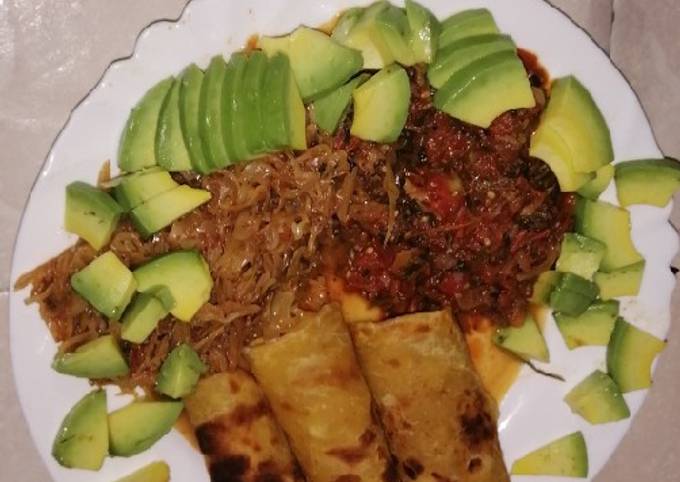Ingredients for Traditional matumbo stew, served with chapati and cabbage
- 250 gms matumbo chopped into pieces
- Cinnamon
- Ginger
- Garlic
- Coriander fresh
- Black pepper
- 3 large tomatoes
- 1 onion
- Cayenne pepper
- Cumin powder
- Curry powder
- Salt to taste
- Bell pepper (optional?
- 1 ltr water
- Cooking oil/ghee/butter
- Cabbage recipe
- Cabbage ¼piece finely chopped
- 1 tomato
- 1 onion
- Salt to taste
- Cayenne pepper (optional)
- Black pepper (optional)
- Cooking oil/ghee/butter
- Cinnamon carrot chapati recipe
- 250 gms wheat flour
- 1 1/2 cups water (warm)
- 2 Carrots (finely grated)
- Cinnamon
- Cardamom (optional)
- Cooking oil/ghee/butter
Cooking Instructions for making Traditional matumbo stew, served with chapati and cabbage
In a pot/sufuria, boil your chopped matumbo add water and let it boil for 1 hour
Drain the excess water and put it aside for later use.
Cut the 3 tomatoes and set aside, onions and coriander also chopped and set aside.
Return the now drained matumbo to your oven/gas/jiko slowly turn until it dries.
Add ghee/cooking oil/butter
3 tablespoons. And stir for a while until the matumbo turns golden brown.
Add chopped onions and stir for a while then add tomatoes.
Add the spices:
Cinnamon
Cayenne pepper
Black pepper
Cumin powder
Curry powder
Ginger
Garlic
And salt to taste
Stir the mixture into a thick yummy paste. Cover the pot for 5 minutes
Add the drained water stir and add coriander /dhania. Cover for 2 mins and the stew is ready, set aside
Now, the cabbage. In a pot/sufuria add ghee/butter/cooking oil.
Add your finely chopped onions stir until golden brown.
Add tomatoes and the spices
Black pepper
Cayenne pepper
Stir until a thick paste is formed.
Add cabbage stir well and cover for 5 mins.
Cabbage is ready, set aside.
For the cinnamon carrot chapati.
In a bowl add wheat flour, salt, sugar(optional), cinnamon, cardamom (optional) mix well. Add ghee/cooking oil/butter and mix thoroughly.
Add finely grated carrots and mix thoroughly. Add warm water and make a soft dough
Let the dought rest at least 30min.
Pre heat your pan. Also make a large circle from your dough and apply ghee/cooking oil/butter. Cut pieces horizontally.
Roll the pieces into balls and use them to make your circular chapatis.
Serve with the matumbo and cabbage with avocado 🥑 toppins🔥🔥

Leave a Reply